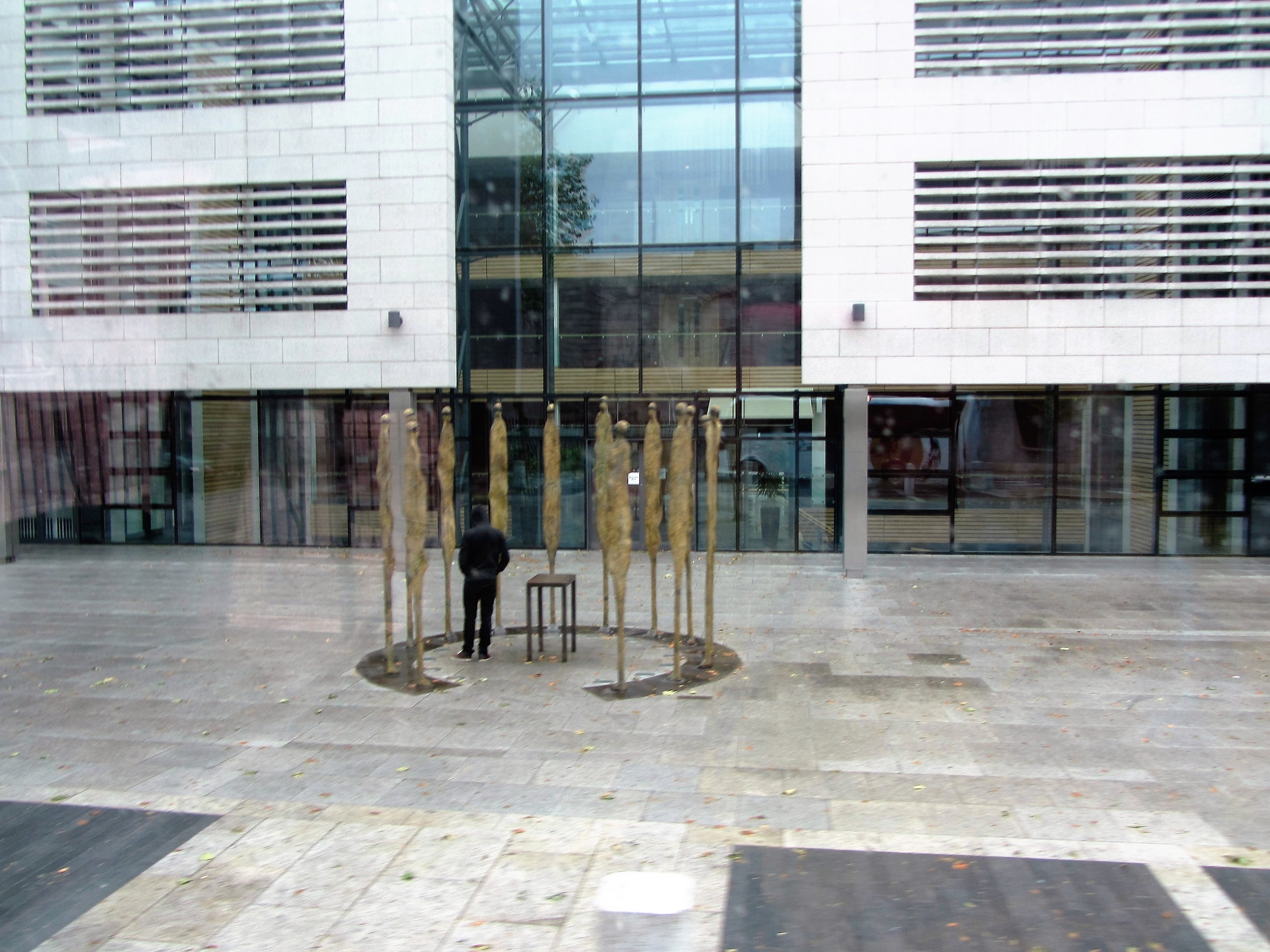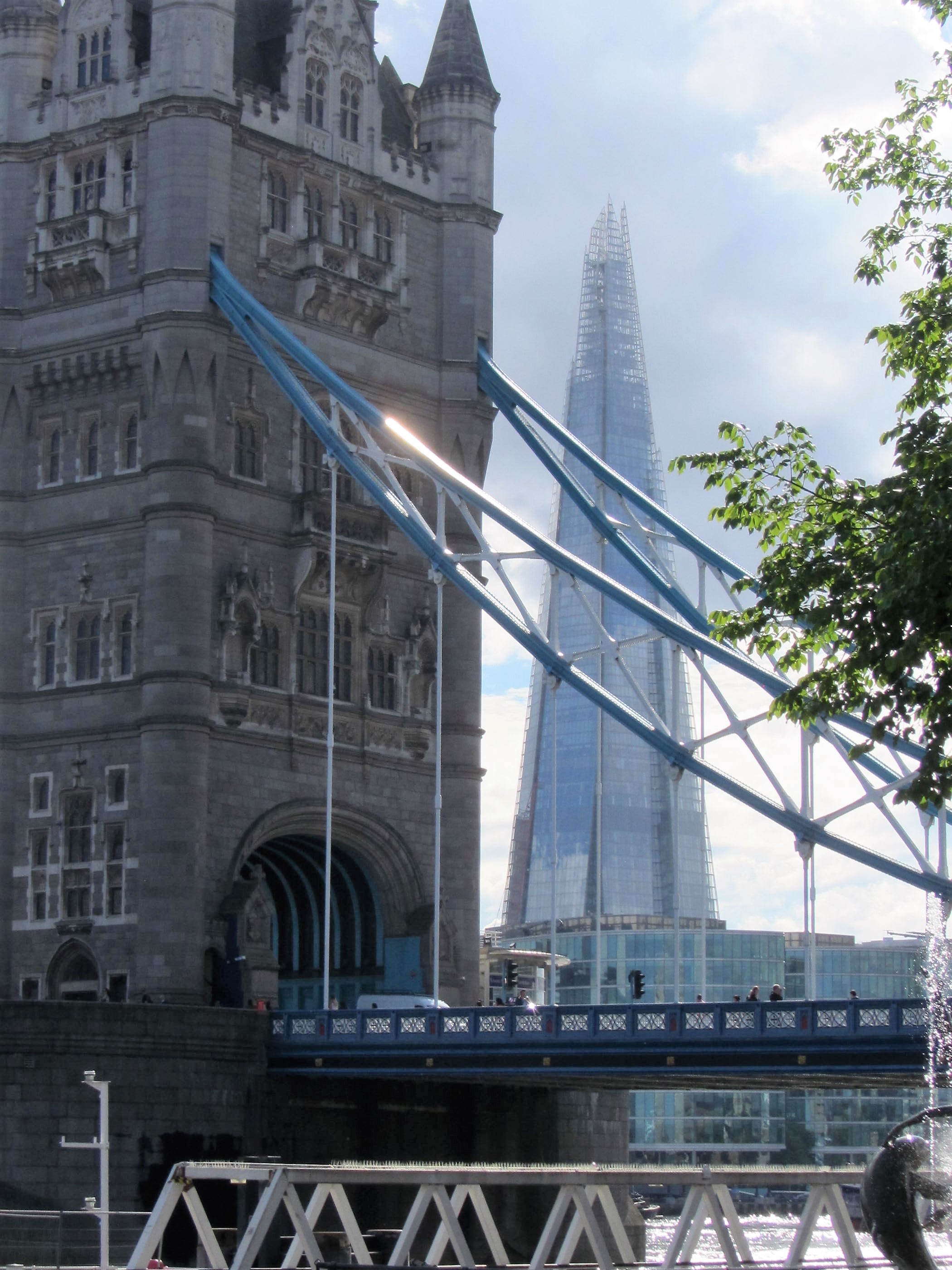
BRITISH ISLES TRAVELOGUE PHOTOS
"Travel is fatal to prejudice, bigotry and narrow-mindedness."
- Mark Twain -

Edinburgh Castle from our hotel room(1)

Edinburgh Castle

Tattoo Show at Prestonfield House, for Robin's BD

Children performers at the Prestonfield Tattoo Show for Robin's birthday

Prestonfield House, Edinburgh

Edinburgh Castle at night, from our hotel room

Piper performing at Loch Lubnaig, Scottish Highlands

This definitely looks like the Scottish Highlands

Lock system at Fort Augustus, Scottish Highlands

ACeltic cross at the local museum at Loch Lubnaig

John Muir Trust building in Pitlochry, Scottish Highlands

Edinburgh Castle, still impressive despite the mist and fog and rain

The Witchery, famous restaurant near Edinbugh Castle

Entrance gates of the Edinburgh Castle

Inside the fortress at Edinburgh Castle

Inside the fortress, at Edinburgh Castle

St. Margaret's Church, Edinburgh Castle

Great Hall in Edinburgh Castle

Unidentified monument in the afternoon mist, Edinburgh

Celtic Cross on Princes Street, Edinburgh

Scottish Parliament building, Edinburgh

Holyrood Palace, the Queen's residence while in Edinburgh

Village of Fittie, near Aberdeen, Scotland

One of many quaint housefronts in the village of Fiffie, near Aberdeen

Village of Fittie, near Aberdeen, Scotland (2)

This plaque replaces the village's weather reports

Village of Fittie, near Aberdeen, Scotland (3)

The kitchen at Crathes Castle, near Aberdeen

Side table in the living-room at Crathes Castle, near Aberdeen

Ceiling paintings on third floor of Crathes Castle

Music room at Crathes Castle

Front entrance to the Crathes Castle

Back of Crathes Castle

St. Magnus Cathedral in Stromness, Orkney Islands,, Scotland

Church built by Italian POW's in 1943 in Stromness, Orkney Islands

Interior of the POWs' Church in Stromness, Orkney Islands

Local street in Stromness, Orkney Islands

Waterfront in Stromness, Orkney Islands

One of the Standing Stones of Stenness, Orkney Islands

The Stones of Stenness, Orkney Island

Waterfront near the Stones of Stenness and the Ring of Brodgar, Orkney Islands

Ring of Brodgar, Orkney Island

One of the stones at the Ring of Brodgar, Orkey Island


Skara Brae neolithic village, Orkney Island

Skara Brae neolithic village, Orkney Island (2)

Skara Brae neolithic village, Orkney Island (3)

Skara Brae neolithic village, Orkney Island (4)

kara Brae neolithic village, with the Skaill House in background, Orkney Island

Skara Brae neolithic village (5)

One of historical markers at Skara Brae neolithic village, Orkney Island

Replica of a Stone Age house, near the Visitors'Center at Skara Brae, Orkney

Visit of a family-run, single-malt Scotch distillery in Stornoway, on the Isle of Lewis

Distillery of the single-malt Scotch in Stornoway, on the Isle of Lewis

Barrels at the single-malt Scotch distillery, Isle of Lewis

Distillery's pile of peat, used as fuel

Typical sights of Scotland, while traveling by coach on the Isle of Lewis (2)

Typical sights of Scotland, while traveling by coach on the Isle of Lewis (3)

Typical sights of Scotland, while traveling by coach on the Isle of Lewis (4)

Stornoway cemetery, Isle of Lewis

Local artisan weavers of Harris Tweed on Isle of Lewis/Harris, Scotland

Geàrrannan Black Houses Village, on the Isle of Lewis, Scotland

Geàrrannan Black Houses Village, on the Isle of Lewis, Scotland (2)

Geàrrannan Black Houses Village, on the Isle of Lewis, Scotland (3)

Geàrrannan Black Houses Village, on the Isle of Lewis, Scotland (4)

Pile of peat for heating the houses of the Black Houses village, Isle of Lewis

Callanish (or Calanais) Standing Stones, Isle of Lewis

Callanish (or Calanais) Standing Stones, Isle of Lewis

Here is Scotland again!

Warming up for the Brexit vote, just a few days away

Youngest performer of the local dancers group which came onboard to entertain us

Kisimul Castle, in the bay of Castlebay, Isle of Barra

Town of Castlebay, Isle of Barra

Castlebay, Isle of Barra

Fish factory, Castlebay, Isle of Barra

Giant shrimp (prawns) in the fish factory, Castlebay, Isle of Barra

Landing strip at Barra Airport, Barra Island, Scotland

The plane is coming, the plane is coming!

The plane has landed at the Barra Airport, Barra Island

For a closer look of the 19-seater after it has landed and turned around to approach the "terminal"

Meet the Barra Airport, in all its glory

On the way back to the port in Castlebay, Island of Barra

Kisimul Caslte facing the harbor of Castlebay, Barra Island

Center of town of Castlebay, Island of Barra

Our GCCL ship, The Corinthian, anchored off shore on the Island of Iona

Island of Iona

St. Columba's Nunnery, on the Island of Iona

St. Columba's Nunnery, on the Island of Iona (2)

St. Columba's Nunnery, on the Island of Iona (3)

St. Columba's Abbey, on the Isle of Iona

St. Columba's Abbey, on the Isle of Iona (2)

St. Columba's Abbey, on the Isle of Iona (3)

Celtic cross in front of St. Columba's Abbey, on the Isle of Iona

Cloister of St. Columba's Abbey, on the Isle of Iona

Inside St. Columa's Abbey Museum, on the Isle of Iona

View from St. Columba's Abbey

Shore line one the Isle of Iona

Typical British turnstile, found on all public paths and trails

Proclamation statue in remembrance of the 14 Irish leaders of the 1916 uprising against the English, Dublin

Guinness Beer headquarters in Dublin, Ireland

Statue of the founder of the famous Guinness beer, Dublin

James Joyce Bridge, Dublin, Ireland

Floor tiles in St. Patrick's Cathedral, Dublin, Ireland

St. Patrick's Catherdral, Dublin, Ireland

St. Patrick's Cathedral, Dublin, Ireland (2)

Trinity College, Dublin, Ireland

The Book of Kells, Old Library of Trinity College, Dublin, Ireland

Long Hall in the Old Library of Trinity College, Dublin, Ireland

Welsh flag, on a pub in Carnarvon, Wales

Castle of Caernarfon, Carnarvon, Wales

Castle of Caernarfon, Carnarvon, Wales (2)

Castle of Caernarfon, Carnarvon, Wales (3)

Caernarfon Castle enclosure from the ramparts

Castle of Caernarfon, Carnarvon, Wales (4)

The longest word (Welsh language, of course) in any language, near Holy Head, Wales

The Last Invasion Tapestry, Fishguard, Wales

The Last Invasion Tapestry, Fishguard, Wales (2)

The Last Invasion Tapestry, Fishguard, Wales (3)

The Last Invasion Tapestry, Fishguard, Wales (4)

Idyllic Welsh landscape

Porthgain, Wales - Hike on the coastal path

Porthgain, Wales - Kayakers in the Atlantic - Hike on the coastal path

Village of Porthgain, Wales

New Grimsby on the Isle of Tresco, Isles of Scilly, off the SW coast of England

New Grimsby on the Isle of Tresco, Isles of Scilly, off the SW coast of England

Abbey Garden, Tresco Island, Islands of Scilly, England

Abbey Garden, Tresco Island, Islands of Scilly, England (2)

Abbey Garden, Tresco Island, Islands of Scilly, England (4)

Abbey Garden, Tresco Island, Islands of Scilly, England (4)

Remnant of the original abbey, Abbey Garden, Tresco Island, Isles of Scilly, England

Rocky outcrop on Tresco Island, Isles of Scilly, England

Westminster Palace, London, England

The Shard Building, London, England

The Shard Building, from the ground, London, England

The Tower Bridge, from the top of the Shard

The Tower of London, from the top of The Shard, London, England

The London Eye, from the top of The Shard, London, England

St. Paul's Cathedral, from the top of The Shard, London, England

The Houses of Parliament, London, England

Three iconic buildings: the Walkie-Talkie, the Cheese Grater (behind), and the Gherkin (next to it), London, England

Another view of the Tower of London, London, England

Westminster Palace, which also includes the Houses of Parliament, London, England

The Strata Building, from the top of The Shard, London, England

The Ladies' restroom, on the 39th floor of The Shard Building, London, England

The Tower of London, London, England

Hungerford Bridge across the River Thames, London, England

Welsh dragon, symbol of Wales and appearing on its flag

Equestrian stature of George IV in front of Buckingham Palace, London, England

Royal initials on the gates in front of Buckingham House, London

Front of Buckingham Palace, residence of the Queen, London, England



Westminster Abbey, London, England

News media setting up for next day's announcements the day after the BREXIT vote, near the Parliament, London, England


The Houses of Parliament, London, England

National Gallery Museum, on Trafalgar Square, London, England

Statue in front of the National Gallery Museum, on Trafalgar Square, London, England

Nelson's Column at Trafalgar Square, London

St. Martin-in-the-Fields, on Trafalgar Square, London, England

Piccadilly, London's Fifth Avenue, England

Not all taxis in London are black any more!

The Houses of Parliament, the day after the BREXIT vote, waiting for announcements from the Prime Minister

London's Eye, with Big Ben in the background, London, England


The British Museum, London, England

Aztec Turquoise Serpent, British Museum, London, England

The Rosetta Stone, at the British Museum, London, England

The Shard Building from the banks of the Thames, London, England

Parthenon building, at the British Museum, London, England

Mold Gold ceremonial cape, at the British Museum, London, England

The Lewis Chessmen Set, at the British Museum, London, England

The Tower of London, with the Walkie-Talkie building in the background, London, England

The Tower Bridge, across the River Thames, London, England

Side wall of the Tower of London, London, England

London's City Hall, near our hotel and next to the Tower Bridge

The Tower Bridge, London, England (2)

The Tower of London with The Shard Building in the background, London, England

Gloriana, the Queen's Row Barge, London, England

Gloriana, the Queen's Rowbarge (2)

Replica of what Stonehenge originally looked like (near Salisbury), England

Stonehenge, neolithic site near Salisbury, England

Stonehenge, neolithic site near Salisbury, England (2)

Stonehenge, neolithic site near Salisbury, England (3)

Stonehenge, neolithic site near Salisbury, England (4)

Stonehenge, neolithic site near Salisbury, England (5)

Stonehenge, neolithic site near Salisbury, England (6)



























































































































































































